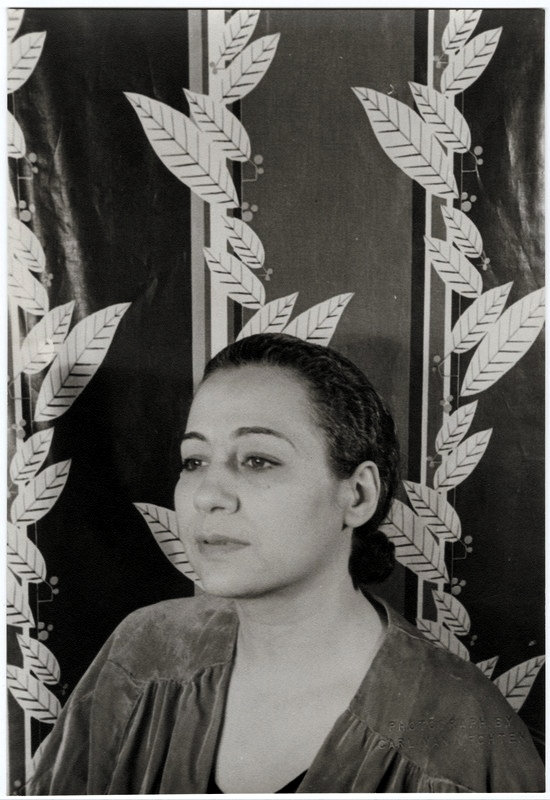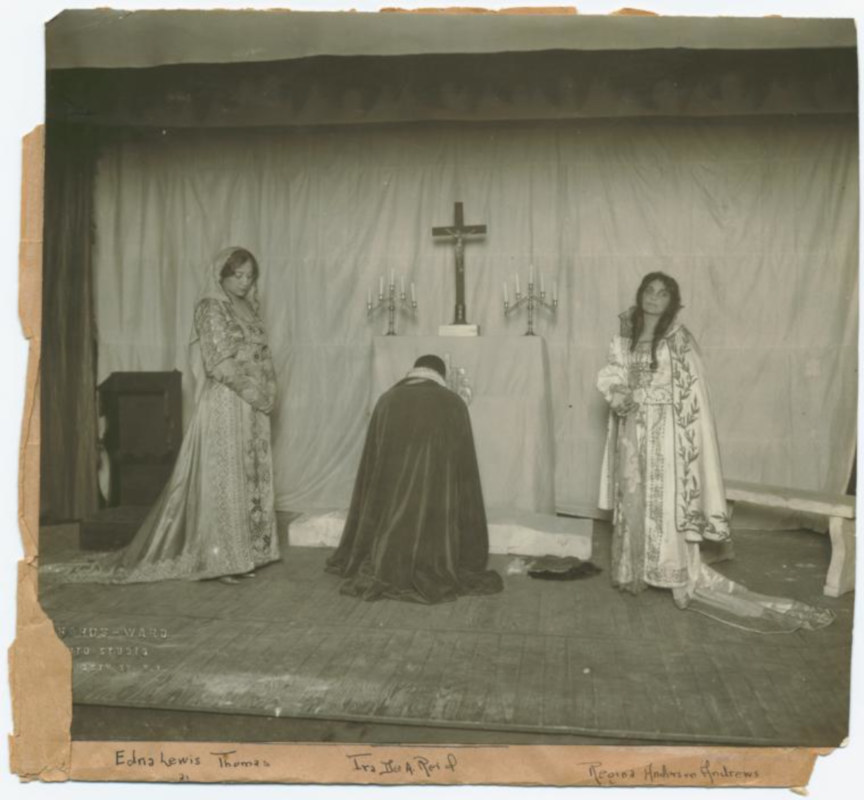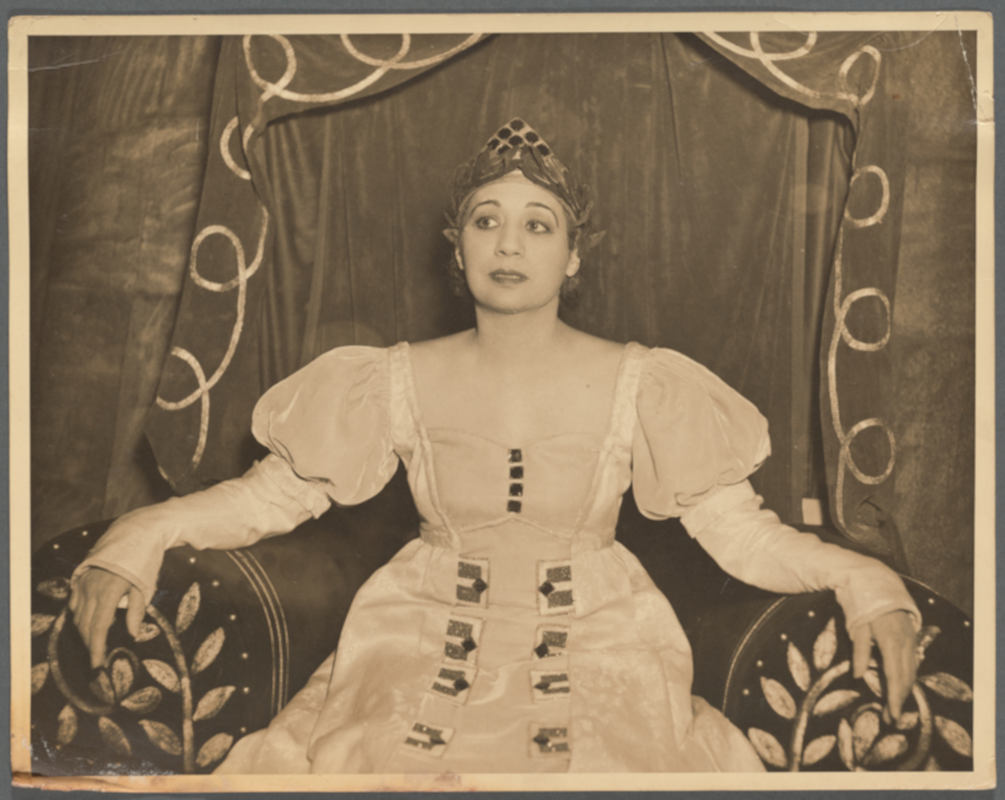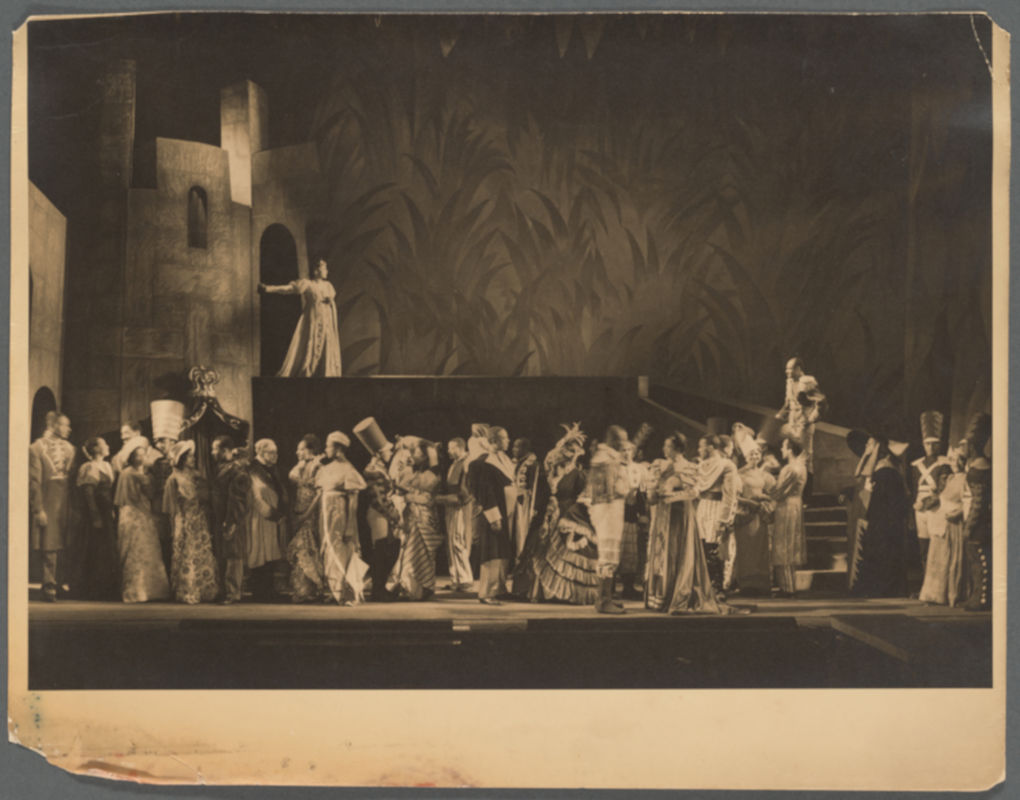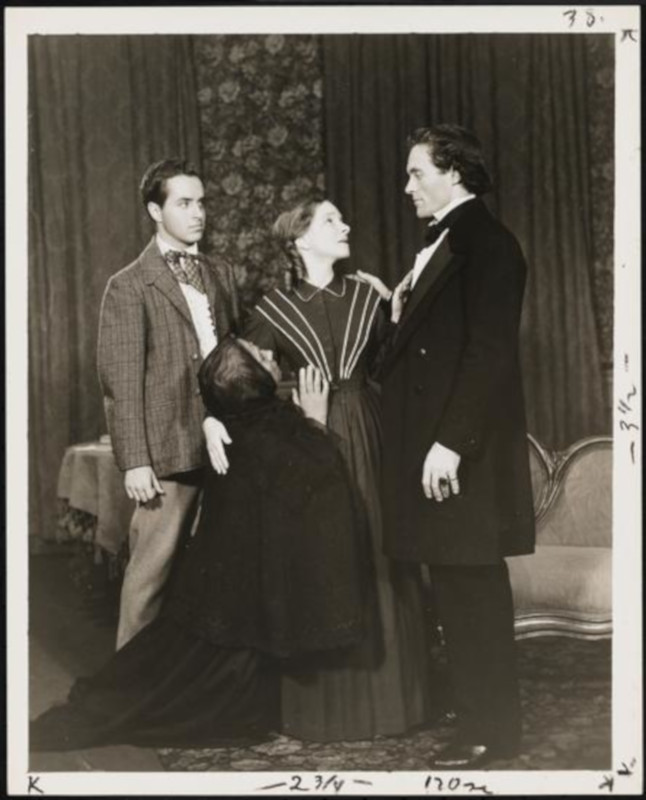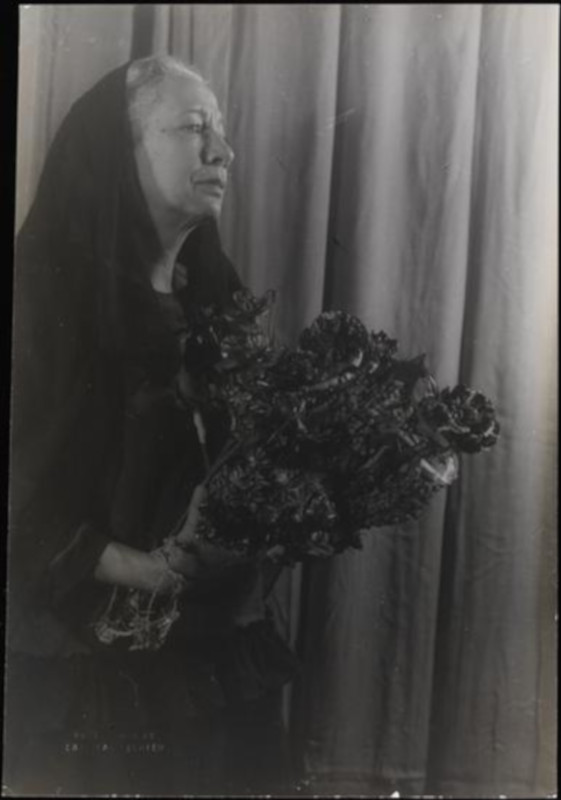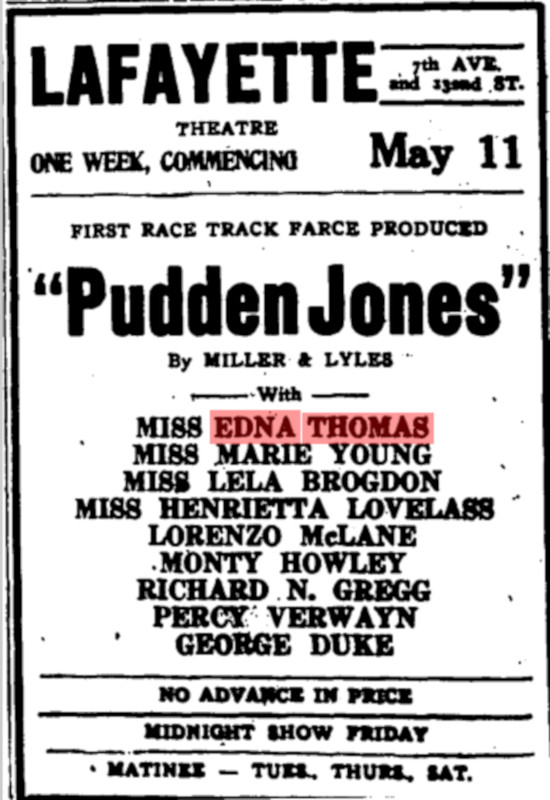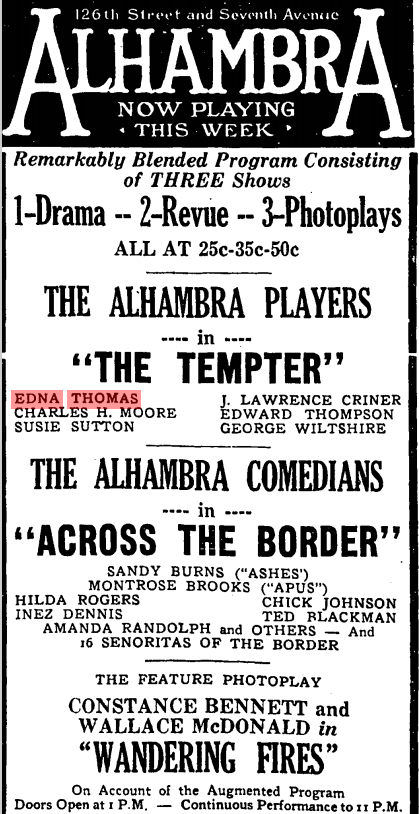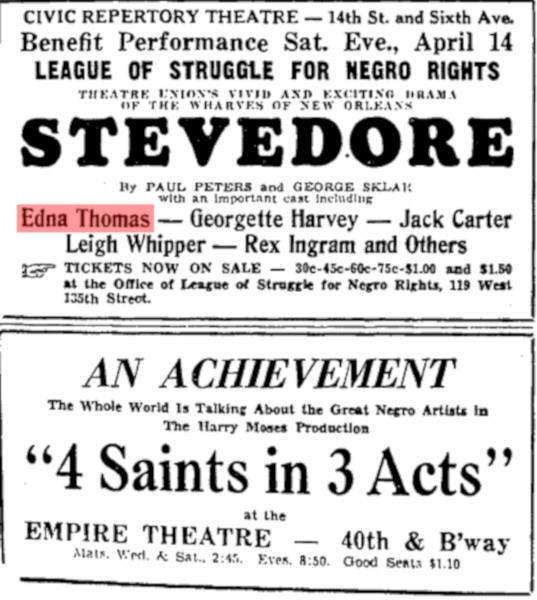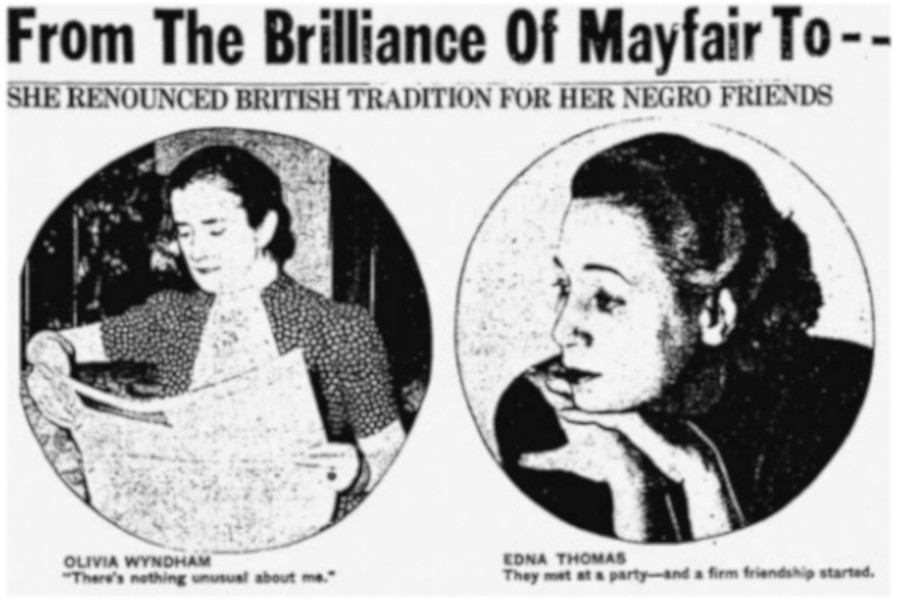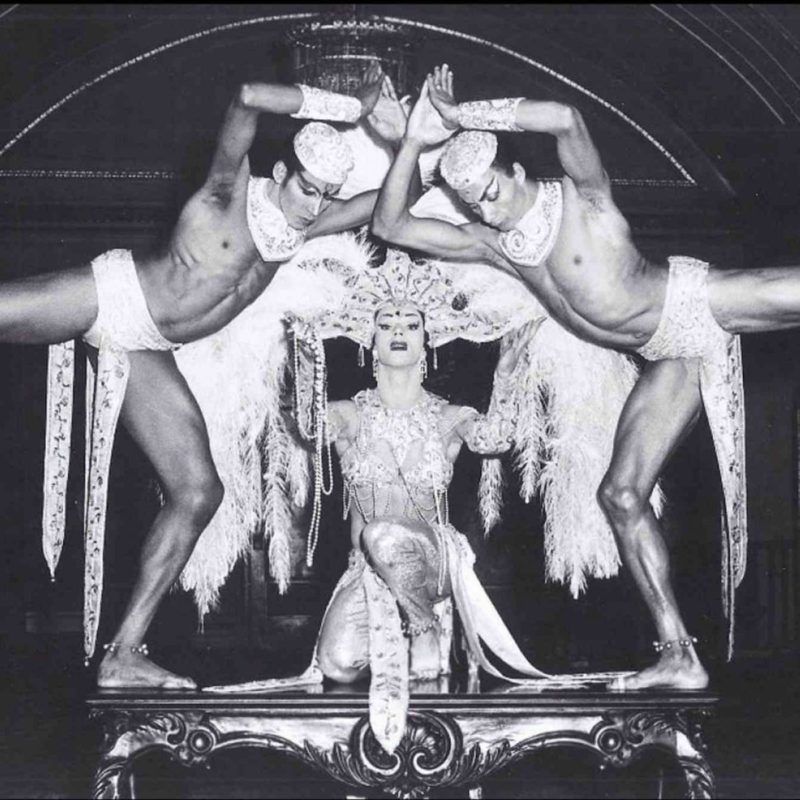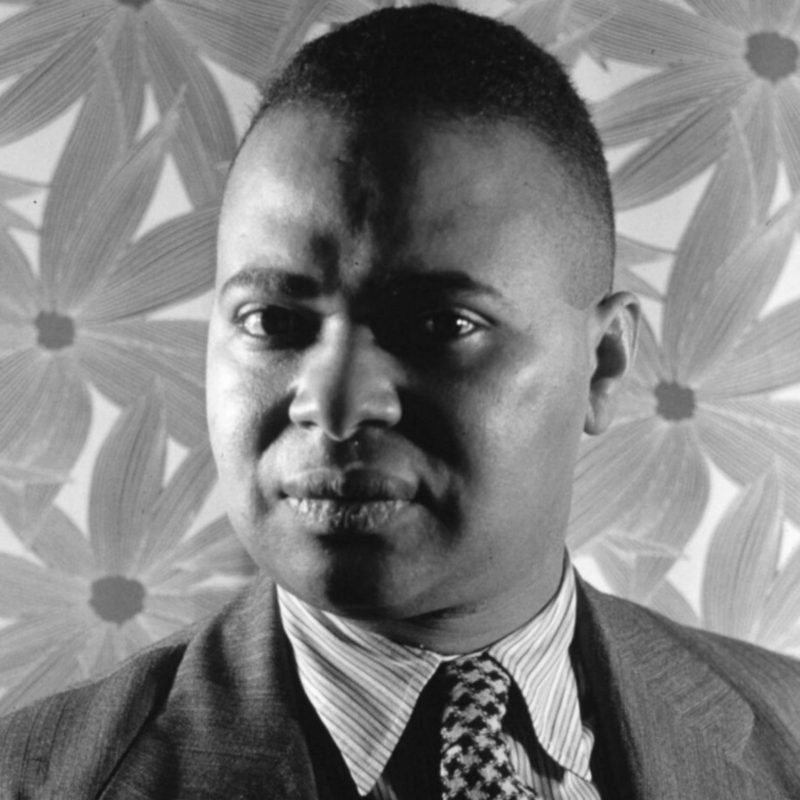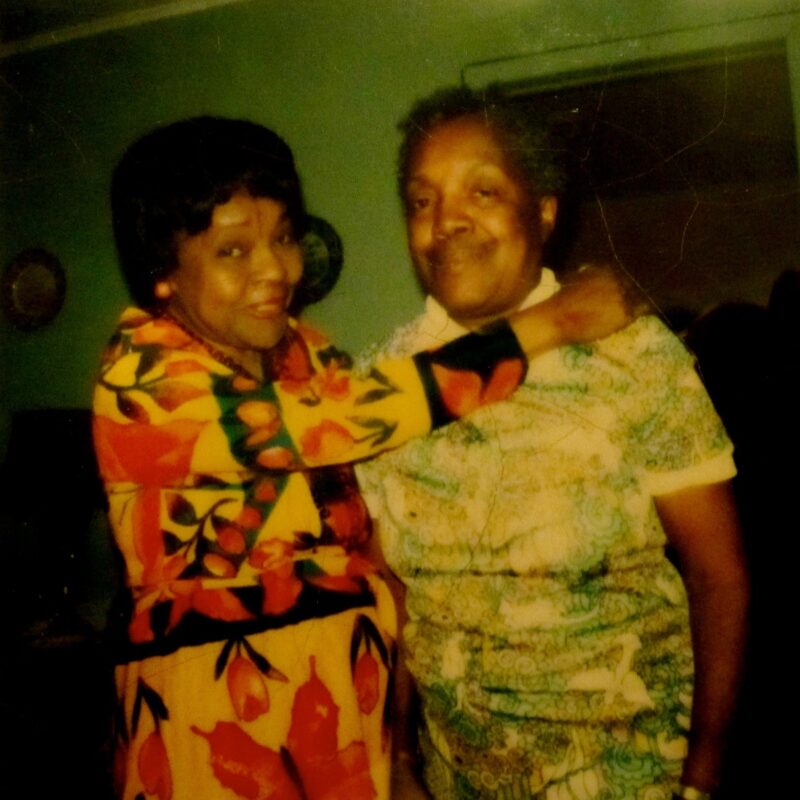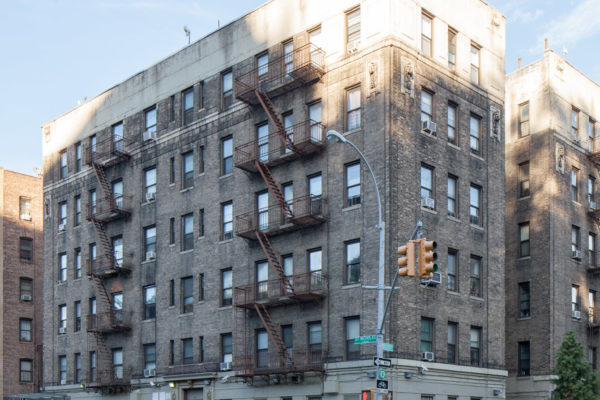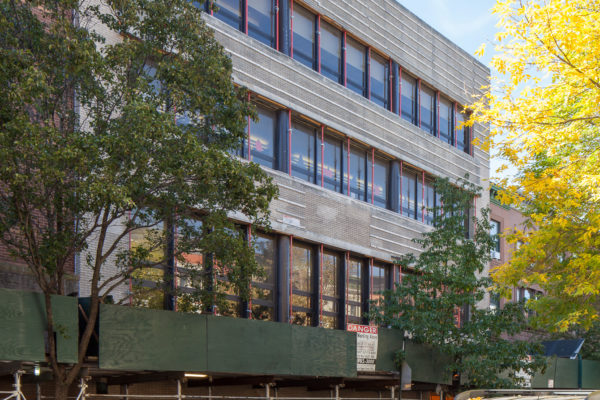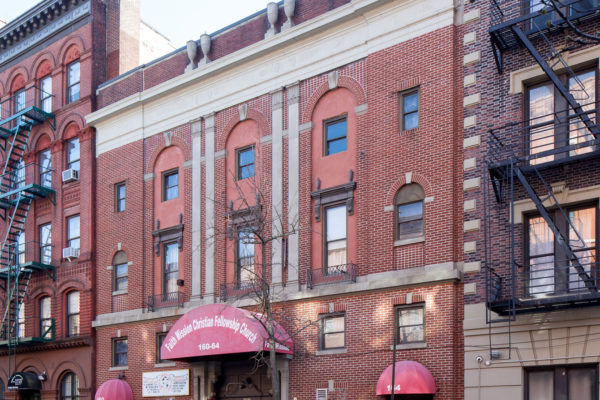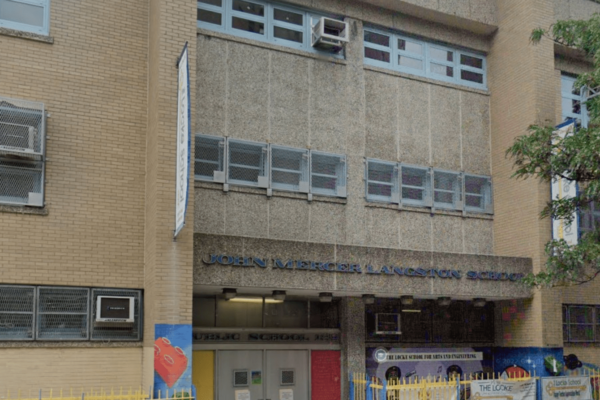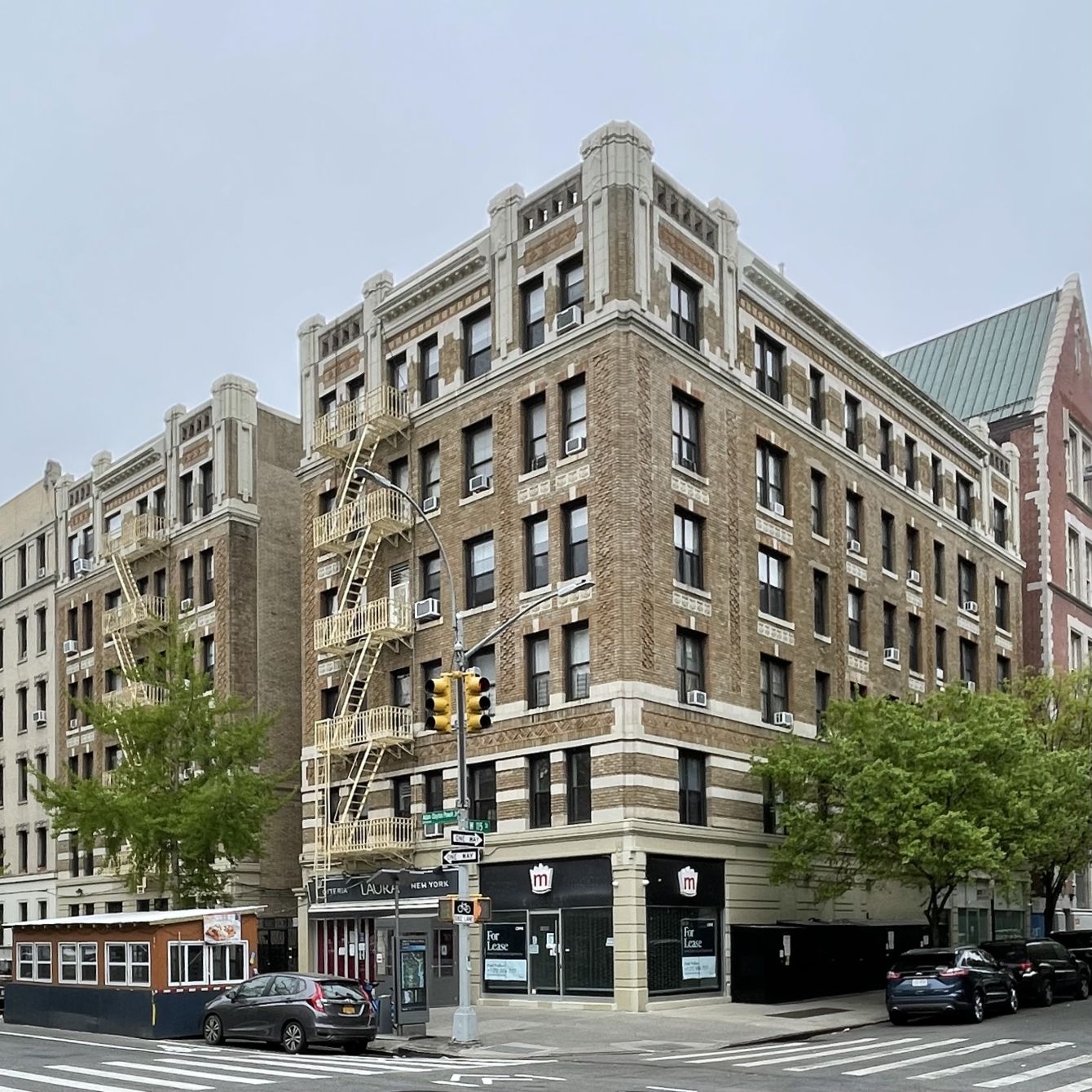
Edna Thomas, Lloyd Thomas & Olivia Wyndham Residence
overview
Edna Thomas, one of the earliest Black actors of the New York stage, came to prominence during the Harlem Renaissance and was pivotal in the development of serious African American theater in the 1920s and 1930s.
By 1930 to at least 1942, she lived with her husband Lloyd Thomas and her romantic partner, the British socialite Olivia Wyndam, in a large co-op in this Harlem building.
On the Map
VIEW The Full MapHistory
Highly influential in Harlem society and in the development of Black theater during and after the Harlem Renaissance, leading stage actress Edna Thomas (maiden name unknown; 1885-1974) was born in Lawrenceville, Virginia, and raised in poverty in Boston. In Wayward Lives, Beautiful Experiments: Intimate Histories of Riotous Black Girls, Troublesome Women, and Queer Radicals (2019), author Saidiya Hartman notes that Thomas knew never to speak of her father — a white man who had raped her mother, a 12-year-old nursemaid in his household — nor her mother’s father or her grandmother’s father. Hartman described Thomas as having an ivory complexion, golden wavy hair, and blue eyes, and that, in her childhood, her “near-white beauty” was both envied and scorned.
Thomas presumably moved to New York City in 1916, the same year as did Madam C.J. Walker, the Black beauty products entrepreneur who employed her as her social secretary. Through Walker, Thomas was introduced to wealthy and fashionable circles and moved easily between Greenwich Village and Harlem. In 1918, she joined the Lafayette Players (1915-1932), the nation’s first professional African American theater company, which staged plays at the Lafayette Theater (demolished) in Harlem and also toured across the country. In 1928, she joined the Alhambra Players at Harlem’s Alhambra Theater, 2108-2118 Seventh Avenue (now Adam Clayton Powell Jr. Blvd), and, in 1930, she performed with the Harlem Experimental Theatre in its first public performance at the 135th Street Branch of the New York Public Library. Already popular on the Harlem stage by the early 1920s, Thomas made her Broadway debut in Lulu Belle (1926) at the Belasco Theater, later appearing in Porgy (1929 revival) at the Martin Beck Theater and Hall Johnson’s all-Black production of Run, Little Chillun (1933) at the Lyric Theater.
By July 1930, Thomas and her second husband, Lloyd Thomas (?-1962), a Black man whom she married c. 1915, were living in a large co-op at 1890 Seventh Avenue (now Adam Clayton Powell Jr. Blvd) in Harlem. Lloyd was indifferent to his wife, a trait that initially intrigued her but eventually brought hardship. Hartman notes that rumors spread that their marriage was one of convenience and posits that Lloyd was likely attracted to gay men regularly in his company, having managed aspiring performers and several Harlem nightspots. However, he also had affairs with women.
The Thomases were frequent guests at A’Lelia Walker’s famed parties at the Dark Tower, a salon in her home (now the site of the Countee Cullen Branch of the New York Public Library). On one occasion there in 1930, British socialite and photographer Olivia Wyndham (1897-1967) — distant cousin of Oscar Wilde — became infatuated with Edna and, after pursuing her for six months, moved in with the Thomases. Her wealth enabled them to live comfortably. They lived together in various residences for decades, with Edna and Olivia as a couple (a topic of fascination for the Harlem press) while Lloyd was essentially a roommate who had other lovers. In 1937, Edna and Olivia, using pseudonyms, took part in a study by Dr. George Henry, from the Payne Whitney Psychiatric Clinic, of “100 socially well-adjusted men and women whose preferred form of libidinous gratification is homosexual.” Historian Jonathan Ned Katz notes that the results of the study show that, “For her time, Thomas was amazingly positive about her lesbian experience.”
Royalty and society big-wigs have sipped cocktails and tea at the 1890 Seventh Avenue Thomas – Wyndham apartment …. Olivia is English to the core. She prefers mannish clothes; enjoys smoking from a very long holder.
Their Seventh Avenue apartment was also a lodging place for Harlem Renaissance notables: novelist Wallace Thurman, writer Dorothy West, “It girl” Blanche Dunn (Lloyd’s lover), and entertainer Jimmie Daniels, who often brought his lover Philip Johnson there in the mid-1930s.
Edna’s influence in creating serious Black theater and advocating for realistic portrayals of African American characters on the stage grew in the 1930s. She was a leading figure in the Negro Actors’ Guild of America, the short-lived Negro Playwrights Company, and the Negro Theatre Project, a division of the Works Progress Administration’s Federal Theatre Project that brought work to Black actors and crew during the Great Depression. With the latter, her portrayal of Lady Macbeth in the popular all-Black production of Macbeth (1936) at the Lafayette Theater solidified her as the “First Lady of Negro Theatre” in the Harlem press.
The Thomases and Wyndham lived at 1890 Seventh Avenue until at least 1942, but also maintained a four-room studio apartment at 450 West 22nd Street in Chelsea beginning in the 1930s. Before her death at St. Vincent’s Hospital in 1974, Edna was living at 360 West 22nd Street.
Entry by Amanda Davis, project manager (May 2021).
NOTE: Names above in bold indicate LGBT people.
Building Information
- Architect or Builder: Gronenberg & Leuchtag
- Year Built: 1912-13
Sources
A’Lelia Bundles, “Madam C.J. Walker: A Brief Biographical Essay,” Madam C.J. Walker, 2020, bit.ly/3uHovFa.
“Alhambra Idea Meets Success,” New York Amsterdam News, April 11, 1928, 9.
Anthony Duane Hill, “Federal Theatre Project (Negro Units),” BlackPast, February 6, 2008, bit.ly/3vQHuxp.
“Experimental Theatre Two Plays: Edna Thomas Supremely Beautiful and Enchanting as Madonna,” New York Amsterdam News, May 28, 1930, 8.
George Hutchinson, In Search of Nella Larsen: A Biography of the Color Line (Cambridge, Massachusetts: Harvard University Press, 2006).
Hugh Ryan, “Remembering A’Lelia Walker, Who Made a Ritzy Space for Harlem’s Queer Black Artists,” NPR, September 22, 2015, n.pr/3xZlT7W.
Jonathan Ned Katz, “Edna Thomas (‘Mary Jones’): “a tenderness I have never known,” Outhistory, bit.ly/3hrMg0v.
Lou Layne, “Talent Development Federal Theatre Aim,” New York Amsterdam News, September 25, 1937, 20.
Michael Henry Adams, “’Beauty is Power’: How Helen Rubenstein, with Elizabeth Arden and Madame C. J. Walker Improved the World,” blog, Mr. Michael Henry Adams’ Style & Taste, December 9, 2013, bit.ly/3nnCX2u.
“Miss Edna Thomas Dead at 88,” New York Amsterdam News, July 27, 1974, C11.
“Negro Playwrights Company in Debut,” New York Amsterdam News, July 20, 1940, 21.
“Off to Europe,” The Chicago Defender, July 12, 1930, 11.
“Photo Standalone 13 – No Title,” New York Amsterdam Star-News, October 10, 1942, 10.
Saidiya Hartman, Wayward Lives, Beautiful Experiments: Intimate Histories of Riotous Black Girls, Troublesome Women, and Queer Radicals (New York: W. W. Norton & Company, 2019). [source of Hartman quotes]
Thelma Berlack-Boozer, “Rich British Woman Forsook Own People to Reside in Harlem,” New York Amsterdam News, September 24, 1938, 1. [source of pull quote]
T.R.P., “’Run, Little Chillun!’ Hits; ‘Louisiana’ Folds,” New York Amsterdam News, March 8, 1933, 8.
“WPA Players Set to Give ‘Macbeth’ With Tropical Locale to Give Color,” New York Amsterdam News, April 4, 1936, 8.
Do you have more information about this site?
This project is enriched by your participation! Do you have your own images of this site? Or a story to share? Would you like to suggest a different historic site?
